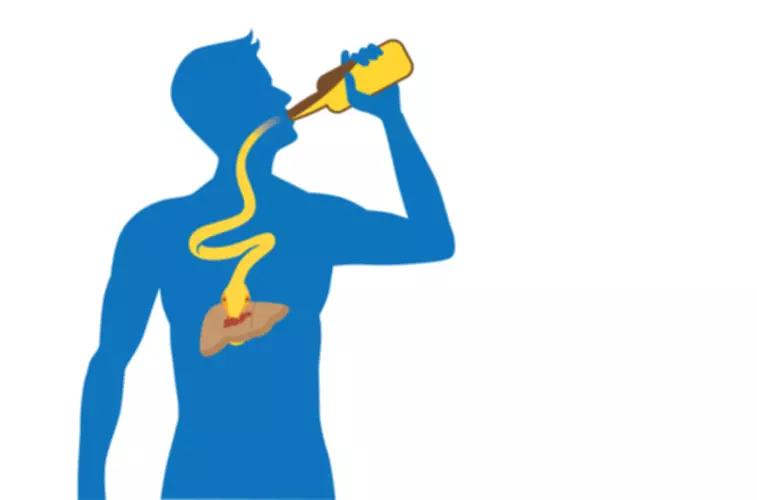
Those with mild neuropathic symptoms and a shorter history of alcohol abuse may experience quicker and more significant recovery, especially if they cease alcohol intake and receive appropriate treatment promptly. Conversely, individuals with more severe neuropathy and a long history of heavy alcohol use may face a longer and more challenging alcohol neuropathy stages recovery process, with some symptoms potentially becoming permanent if nerve damage is extensive. The symptoms of alcoholic neuropathy can significantly impair an individual’s quality of life. Initially, symptoms might include tingling, numbness, or a burning sensation in the extremities, particularly the feet and hands.
- Some other studies have indicated that chronic alcohol intake can decrease the nociceptive threshold with increased oxidative-nitrosative stress and release of pro-inflammatory cytokines coupled with activation of protein kinase C (Figure 1) [10, 16].
- The first step in seeking help for alcohol addiction might be to consult your healthcare provider.
- The evidence of positive dynamics at peripheral and segmental nerve system level was supported by neurophysiological data.
- The absence of evaluation of biochemical indicators regarding toxicity in nervous system that could better explain the alcohol-induced neurodegeneration process, what we intend to perform in future studies.
- However, experts still do not have a full understanding of how alcoholic neuropathy happens, which can make treatment challenging.
- The domains are neurological, autonomic, and behavioral; each one with its measurement and evaluation parameters (Boucard et al., 2010).
Perfusion and Nerve Dissection
- The monofilaments were applied five times at intervals of five seconds, or as soon as the pelvic limb was properly positioned on the platform.
- Superficial sensation, especially nociception, was predominantly impaired and painful symptoms were the primary complaint in most patients in this group.
- Because of the many effects that alcohol has on the organism, it is important that patients with alcoholic neuropathy be managed by a team of inter-professionals in the health industry.
- During the initial stages of ALN, the disease may appear asymptomatic and demonstrable only on electroneurographic investigation [71, 111, 112].
- Symptoms can include numbness in hands and feet, digestive issues, and loss of balance due to loss of nerve function.
- However, this seemingly innocuous sensation may be an early warning sign of a condition known as alcoholic neuropathy, a lesser-known but significant consequence of long-term alcohol use.
Other coexisting, alcohol-related diseases may induce exacerbation of AAN symptoms. It was shown that patients with liver cirrhosis (regardless of its etiology) present dysfunctions in ANS, primarily within the vagus nerve [170]. Proposed mechanisms include circulatory disturbances in liver cirrhosis, metabolic and neurohormonal (renin-angiotensin-aldosterone system) dysfunctions, excessive nitric oxide production, oxidative stress, and inflammatory mediators [11, 171].
Signs and symptoms
- Activation of spinal cord microglia, mGlu5 spinal cord receptors, and hypothalamic-pituitary-adrenal axis appear to be implicated in this process [92,93,94,95,96,97].
- This condition is caused primarily by the toxic effects of alcohol on the nerves, coupled with nutritional deficiencies common in long-term alcohol use.
- Treatment may involve nutritional supplementation, pain management, and abstaining from alcohol.
Someone who struggles with alcoholism may replace meals with alcohol, take in a lot of empty calories, and not maintain a healthy and balanced diet. Alcohol can also deplete the body of essential nutrients, and thiamine (vitamin B1) deficiency is common in people https://ecosoberhouse.com/article/10-best-alcohol-addiction-recovery-books/ who battle alcoholism. Malnutrition due to alcoholism can contribute to nerve damage and alcoholic polyneuropathy as well. The US National Library of Medicine (NLM) warns that around 50 percent of long-term heavy drinkers will suffer from alcoholic neuropathy.
How do doctors diagnose alcoholic neuropathy?

In rare cases, vagus or recurrent laryngeal nerve involvement has been described. In cases of more severe and advanced presentation, patients may report distal upper extremity symptoms. American Addiction Centers (AAC) is committed to delivering original, truthful, accurate, unbiased, and medically current information.
However, bias was still considered when evaluating studies as these study types were subject to the following limitations; population selection bias, loss of patients at follow ups, bias through misclassification or misdiagnosis, patient recall and observer bias. To assess the bias in these we applied the Jadad score which takes into consideration quality of randomisation and blinding as well as reporting of withdrawals to assess bias in RCTs [9]. All RCTs that were included As well as this, where interventional studies are cited a clear description of their design is in text to allow the reader to evaluate that articles risk of bias. A person can improve their outlook by significantly reducing or stopping their alcohol intake and ensuring that they are receiving the right balance of nutrients. A doctor may also want to test the functioning of the kidneys, liver, and thyroid. In addition, they may order blood tests to check for vitamin and nutrient deficiencies.

It was observed that abstinence may lead to the regression of several symptoms of AAN [159]. Alcohol causes neuropathy via multifactorial processes, many of which are still under investigation. Alcohol enters the bloodstream from the digestive system within 5 minutes of consumption, and peak absorption is seen within 30 to 90 minutes.
Oxidative-nitrosative stress and alcoholic neuropathy

The domains are neurological, autonomic, and behavioral; each one with its measurement and evaluation parameters (Boucard et al., 2010). This test is commonly used in studies of neuropathic disorders, and it is easily replicable. Evidence of other alcohol-related end-organ damage also may be observed on physical examination. The patient should be examined for additional manifestations of chronic alcohol abuse such as caput medusae, ascites, digital clubbing, Dupuytren contractures, palmar erythema, gynecomastia, and jaundice. Medicines may be needed to treat pain or uncomfortable sensations due to nerve damage. They will be prescribed the smallest dose of medicine needed to reduce symptoms.
- This can be achieved by complete alcohol abstinence and a balanced diet primarily supplemented by B6, B12, and E vitamins, as well as folate, thiamine, and niacin.
- Overconsumption of alcohol may directly harm and hinder the nerves’ ability to communicate information from one body area to another.
- It also impacts the myelin, which is the fatty coating that protects the nerves.